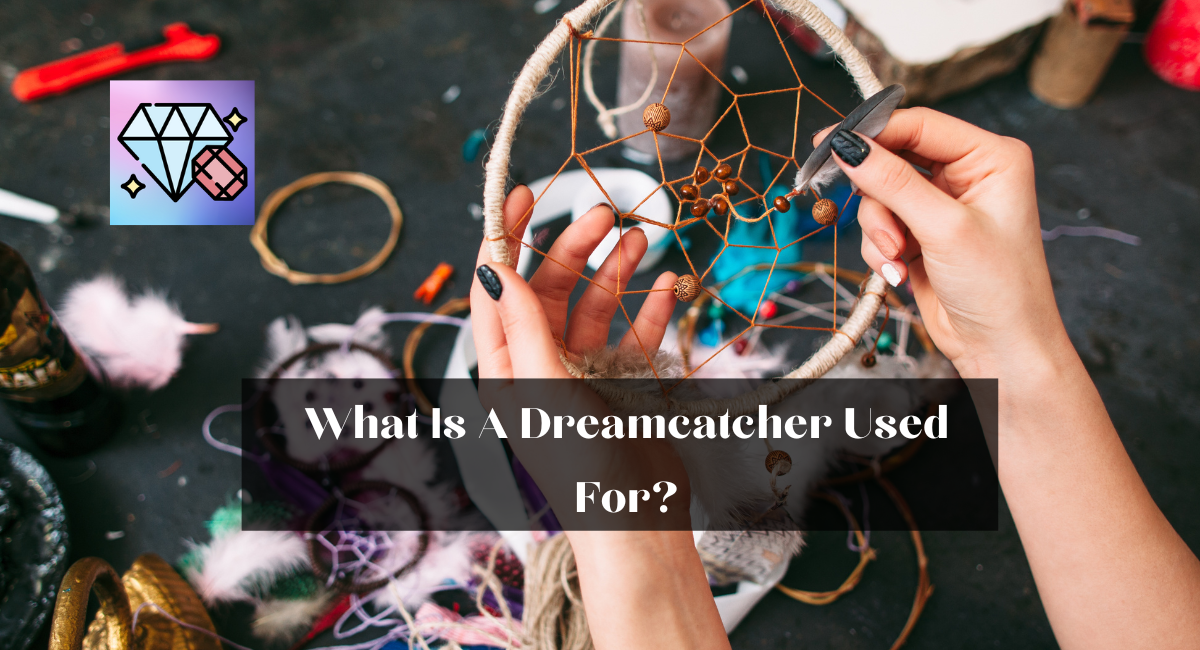The Ojibwa (Chippewa) tribe is frequently associated with dreamcatchers, which are captivating and intricate objects. These handcrafted, ornamental items have gained worldwide recognition and use, transcending their cultural origins.
Tradition holds that dreamcatchers have spiritual significance and can filter out negative dreams and energies, allowing only positive ones to penetrate a person’s dream world. This article, will explain what is a dreamcatcher used for.
What Is A Dreamcatcher Used For?
1. Filtering Dreams
It is believed that dreamcatchers can filter dreams and visions. According to Ojibwa custom, they are suspended above a person’s bed to capture pleasant and unpleasant dreams.
It is believed that the web-like design in the center of the Dreamcatcher captures negative visions, allowing only positive ones to pass through.
2. Protection
Dreamcatchers are regarded as protective talismans. The positive dreams that pass through the dreamcatcher’s center are thought to slide down the feathers to the sleeper, while the bad dreams are believed to be trapped in the web and subsequently dissolved or burned by the first light of day.
3. Cultural And Spiritual Significance
Dreamcatchers hold cultural and spiritual significance for many indigenous peoples.
They are frequently regarded as sacrosanct objects crafted with materials and patterns that vary from tribe to tribe.
4. Symbolic Meaning
Beyond their practical function, dreamcatchers also have symbolic significance.
The circular shape symbolizes the cycle of life, while the inner web is commonly said to represent life’s journey, with its many turns and twists.
5. Decorative Art
In modern Western culture, dreamcatchers are frequently employed for decorative and aesthetic purposes.
They can be found in residences, automobile decorations, and jewelry. Numerous individuals value dreamcatchers for their intricate and aesthetically pleasing designs.
6. Spiritual Connection
Some believe that dreamcatchers can help them communicate with their spirituality and guide them on their spiritual journey.
One way they facilitate this connection is through meditation or prayer.
7. Cultural Heritage
Dreamcatchers are deeply rooted in the cultural heritage of Native American nations, especially the Ojibwa (Chippewa) and Lakota Sioux.
The central concept of capturing negative dreams and allowing positive ones to travel through is a common thread in the cultural traditions of these tribes, even though each tribe has its variation of the dreamcatcher.
8. Respect For Nature
Dreamcatchers’ creation frequently requires using natural materials such as willow branches, sinew, and feathers.
These materials are regarded as nature’s offerings, and their use reflects the Indigenous peoples’ reverence and appreciation for the natural world.
9. Oral Traditions
Dreamcatcher creation and use are frequently accompanied by oral traditions, and stories handed down through the generations.
These tales illuminate dreamcatchers’ cultural and spiritual significance, emphasizing their role in shielding individuals from negative energies and nightmares. They also serve to preserve the indigenous ancestors’ knowledge.
10. Healing And Well-Being
For some individuals, dreamcatchers function as more than just a symbol. They believe that a dreamcatcher can promote emotional and spiritual health.
The concept is that a dreamcatcher, besides its dream-filtering function, helps create a tranquil and harmonious living environment.
11. Cultural Education
Dreamcatchers are frequently used as educational tools to educate Native and non-Native students about Indigenous cultures.
They facilitate discussions about traditional crafts, the significance of symbolism, and these cultures’ spiritual beliefs. This educational use promotes cultural appreciation and understanding.
12. Artistic Expression
Numerous contemporary artists and artisans have embraced the art of dreamcatcher creation.
They create intricate, one-of-a-kind designs by combining various materials, hues, and patterns. Modern interpretations of dreamcatchers are admired for their inventiveness and beauty.
13. Gifts And Tokens
Giving someone a dreamcatcher as a gift can be a thoughtful gesture. It is frequently interpreted as a wish for the recipient’s health, safety, and good dreams.
Gifted dreamcatchers communicate that the giver is concerned for the happiness and safety of the recipient.
14. Spiritual Meditation
Some individuals incorporate dreamcatchers into their meditation and mindfulness practices.
A dreamcatcher’s intricate design and symbolism can serve as a focal point for meditation, aiding concentration and facilitating an interior connection.
15. Cultural Bridge
Dreamcatchers can serve as a cultural bridge for those from non-Native backgrounds to comprehend Indigenous cultures.
Numerous individuals value dreamcatchers for their aesthetics and symbolism while respecting and honoring the culture from which they originated.
16. Controversy And Appropriation
Awareness of the controversies surrounding the mass production and commercialization of dreamcatchers is essential.
The sale of mass-produced dreamcatchers as mementos and home décor items has raised concerns regarding cultural appropriation and the need to respect these objects’ spiritual and cultural significance. Indigenous communities have frequently emphasized preserving their cultural heritage and traditions.
Dreamcatchers are culturally significant and visually arresting objects that are traditionally believed to be able to filter out bad dreams and negative energies. While admired for their aesthetic appeal, they also serve as talismans to protect and bless individuals as they slumber. Dreamcatchers continue to be admired for their craftsmanship and the belief that they can promote positive visions and well-being, whether used as home decor, in nurseries, or even as jewelry.
Read More: What Do Different Colored Ribbons Mean?

